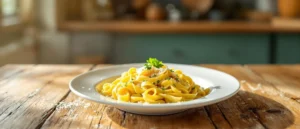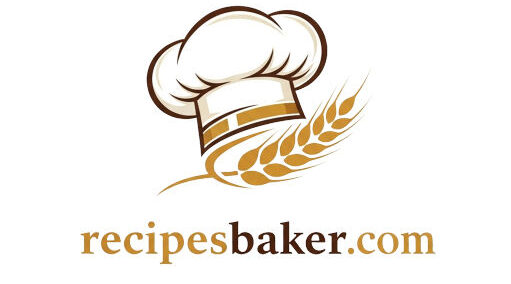If you love pasta, you’ve probably heard of tagliolini, but have you ever tried it? This delicate, ribbon-like pasta is a hidden gem in Italian cuisine, perfect for anyone who enjoys light, flavorful dishes. Pair it with a buttery truffle sauce or toss it with fresh seafood, and tagliolini turns every meal into a special occasion.
Unlike the more common spaghetti or fettuccine, tagliolini brings its own unique charm to the table. Its thin, flat shape soaks up sauces beautifully, making every bite a burst of flavor. Curious about its origins or how to cook it to perfection? You’re in for a treat. Let’s take a closer look at what makes tagliolini so special. For more on the history of Italian pasta, check out this guide.

What Makes It Unique Italian Pasta?
Tagliolini is a type of Italian pasta that’s long, thin, and ribbon-like, often made with a simple dough of flour and eggs. It’s similar to tagliatelle but much narrower, giving it a more delicate texture. Think of it as the elegant cousin of spaghetti, perfect for dishes that call for a lighter touch.
The name tagliolini comes from the Italian word “tagliare,” which means “to cut.” This name reflects how it’s made—rolled-out sheets of pasta dough are sliced into thin strips. While it’s popular across Italy, tagliolini holds a special place in the Piedmont and Molise regions, where locals often serve it with specialties like truffles or rich broths.
If you want to try making your own pasta, check out this helpful guide on how to make fresh pasta. It’s easier than you might think and adds a personal touch to your meals.
A Taste of History: Regional Significance of This Pasta
The story of tagliolini runs deep in Italian culinary traditions. It originated in the northern regions of Piedmont and Molise, where it has been a staple in kitchens for centuries. In Piedmont, locals often call it tajarin and pair it with white truffles, a luxurious ingredient that highlights the pasta’s delicate flavor.
In Molise, tagliolini takes on a more rustic role. Cooks often serve it in hearty broths or with simple sauces that let the pasta’s quality shine. Whether at a festive gathering or a quiet family dinner, tagliolini brings people together. Its versatility allows it to fit any occasion, from a fancy celebration to a comforting weeknight meal.
Crafting the Perfect Tagliolini: How to Make Ribbon Pasta at Home
Making tagliolini from scratch takes effort, but the results are worth it. The dough uses just a few ingredients: flour, eggs, and a pinch of salt. Some recipes also include semolina for added texture. Here’s how to make it:
- Mix the Dough: Combine the flour and eggs until the dough becomes smooth and elastic. Knead it for about 10 minutes to develop the gluten.
- Roll It Out: Use a rolling pin or pasta machine to create thin sheets of dough.
- Cut the Strips: Fold the sheets and slice them into thin ribbons, about 2-3 millimeters wide.
- Cook or Dry: Cook the pasta immediately or let it dry for later use.
Fresh tagliolini has a tender, melt-in-your-mouth texture that’s hard to beat. If you’re short on time, dried versions are widely available and still deliver excellent results.
Comparing Pasta Types: Spaghetti, Tagliatelle, and More
When it comes to pasta, the details make all the difference. Here’s how this dish compares to other popular types:
- Spaghetti: Both are long and thin, but tagliolini is flat and ribbon-like, making it better for light, creamy sauces.
- Tagliatelle: These two are often confused, but tagliolini is much narrower and more delicate.
- Capellini (Angel Hair): Slightly thicker than capellini, tagliolini holds up better in dishes with more sauce or texture.
Each type of pasta has its strengths, but tagliolini stands out when you want something refined and versatile.
Cooking Tips for Perfectly Tender Tagliolini Pasta
Cooking tagliolini is a breeze if you follow a few simple tips:
- Boil in Salted Water: Use plenty of water and a generous pinch of salt. This seasons the pasta from the inside out.
- Watch the Clock: Fresh tagliolini cooks in just 2-3 minutes, while dried versions take about 5-6 minutes. Keep an eye on it to avoid overcooking.
- Save the Pasta Water: A splash of starchy pasta water helps bind your sauce to the noodles.
Once cooked, toss the pasta with your sauce of choice and serve immediately. It’s a simple process, but the results are nothing short of spectacular.
Sauces That Shine with Tagliolini and Other Ribbon Pastas
The beauty of tagliolini lies in its ability to pair with a wide range of flavors. Here are some classic combinations to try:
- Butter and Truffle Sauce: A luxurious option that highlights the pasta’s delicate texture.
- Lemon and Olive Oil: Light and refreshing, perfect for a summer meal.
- Seafood Sauces: Clams, shrimp, or scallops add a touch of elegance.For a hearty pairing, Consider serving this delicate ribbon pasta alongside a delicious coulotte steak recipe
- Broth-Based Dishes: Ideal for colder months, when you’re craving something warm and comforting.
No matter what you choose, simplicity is key. Let the quality of the pasta and the freshness of the ingredients shine.
Recipes to Try with This Italian Classic
If you’re ready to get cooking, here are a few recipes to inspire you:
- Tagliolini al Tartufo (Truffle Tagliolini): Toss the pasta with butter, Parmesan, and freshly shaved truffles for a dish that’s pure indulgence.
- Tagliolini al Limone (Lemon Tagliolini): Combine lemon zest, olive oil, and a touch of cream for a bright, zesty flavor.
- Seafood Tagliolini: Sauté shrimp, garlic, and cherry tomatoes, then toss with the pasta for a quick and delicious meal.For a hearty pairing, consider serving tagliolini alongside this delicious coulotte steak recipe
- Tagliolini Cacio e Pepe: A simple mix of Pecorino Romano and black pepper creates a creamy, peppery sauce that clings to every strand.
Each of these dishes showcases the versatility of tagliolini. Whether you’re in the mood for something rich or light, there’s a recipe for you.
Nutrition and Health Benefits of Fresh Pasta
this dish isn’t just about taste—it’s also a nutritious choice when enjoyed in moderation. Made primarily from eggs and flour, it provides energy from carbohydrates and protein from the eggs. If you’re looking for a meal that’s both comforting and nourishing, this dish fits the bill.
Here’s a quick breakdown of its nutritional profile (per 100 grams of fresh pasta):
- Calories: Around 130-150
- Carbohydrates: 25-30 grams
- Protein: 5-7 grams
- Fat: 1-2 grams
To make your meals healthier, swap regular flour for whole-grain or gluten-free alternatives to add fiber and improve digestion. Pair tagliolini with fresh vegetables, lean proteins, or light sauces to create a balanced dish. Keep portion sizes in check—eating too much can feel heavy, but the right amount leaves you satisfied.”Looking for healthy alternatives to pair with your pasta? Try this avocado mayo recipe for a nutritious twist
FAQs About Tagliolini
If you’re new to this ribbon pasta, you might have a few questions. Let’s clear up some common ones so you can enjoy this dish like a pro.
What is the difference between spaghetti and tagliolini?
While both are long and thin, tagliolini is flat and ribbon-like, whereas spaghetti is round. This difference in shape makes tagliolini better suited for light, creamy sauces or broths, as it absorbs flavors more effectively.
What is tagliolini pasta used for?
Tagliolini is incredibly versatile. It’s often used in dishes with light sauces, such as butter and truffle or lemon-based sauces. It also works beautifully in seafood dishes or even in broths for a comforting soup. Its delicate texture makes it a great choice for recipes where the pasta is the star of the show.
What is the difference between tagliatelle and tagliolini?
The main difference lies in the width. Tagliolini is much narrower than tagliatelle, giving it a lighter, more delicate feel. While tagliatelle is often paired with hearty, meaty sauces like Bolognese, tagliolini shines with lighter, more refined flavors.
How do you eat pastalini?
The best way to enjoy tagliolini is to twirl it gently with a fork. Its thin, flat shape makes it easy to pick up, and it pairs wonderfully with sauces that cling to the pasta. Whether you’re eating it with truffles, seafood, or a simple butter sauce, the key is to savor every bite.
Conclusion: Why You Should Try this dish
There’s something magical about this dish. It’s not just another pasta—it’s a culinary experience that brings a touch of Italy to your table. Whether you’re whipping up a quick weeknight dinner or preparing a special meal for loved ones, tagliolini has a way of making every dish feel like a celebration.
Its delicate texture, versatility, and ability to pair with a wide range of flavors make it a must-try for any pasta enthusiast. So, roll up your sleeves, grab some fresh ingredients, and give tagliolini a shot. You might just find yourself falling head over heels for this elegant Italian classic.
